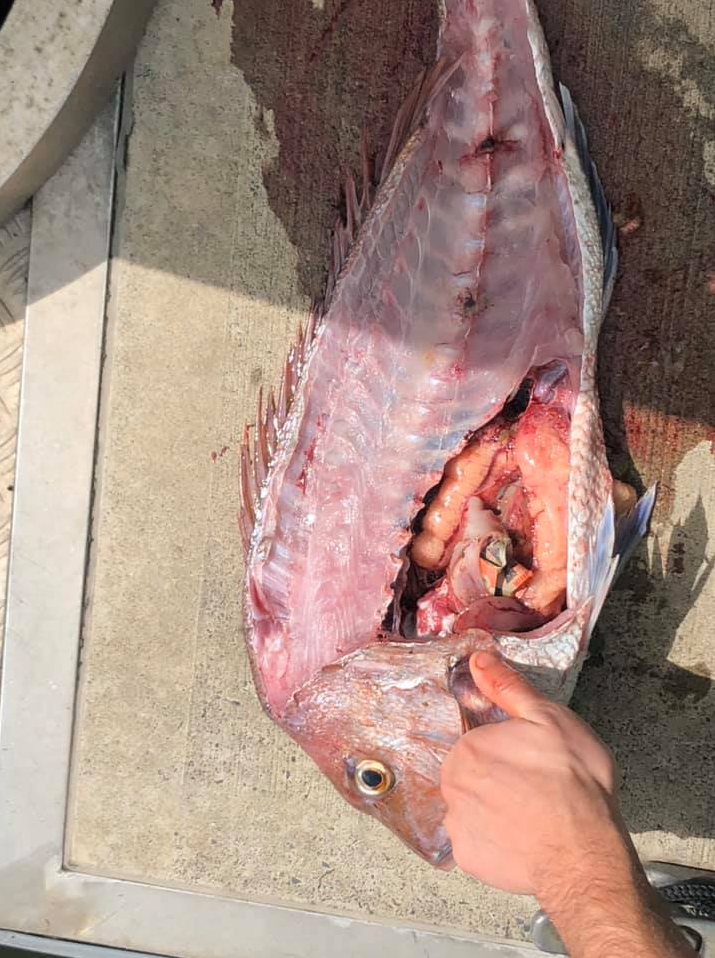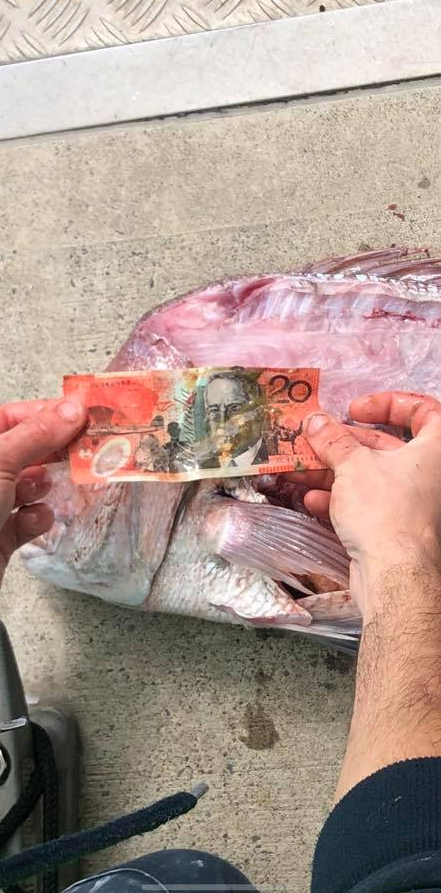'Mind blown': Fisherman's extraordinary 'find inside catch'
A fisherman claims he became $20 richer after luring in a sizeable catch with an unexpected item hidden inside its stomach.
The $20 bank note was apparently found in the stomach of a pink snapper reeled in by a man in Melbourne, and appeared to be fully intact and useable after being removed from its innards.
Gory images of the dead animal were shared by the Sharkmen Fishing Charters Melbourne Facebook page on Wednesday with the caption: “MIND BLOWN!!! No word of a life....”.
But not every one was convinced the find was fair dinkum.

“Looks a bit neat and dry, very much like it’s folded and pushed in. but it’s easy to assume and difficult to tell from a picture,” one of the more than 3000 comments on the post read.
The fact that snappers are notorious “bottom feeders” also sparked skepticism from people who were unsure how the fish would have consumed the note, which would be more likely to be found floating on the water’s surface.
“I wonder how that note sank to the bottom,” someone wrote.
In response, the page administrator claimed it was in the process of running “lab tests” to determine more information about how the money came to be inside the fish.
“We are also intrigued,” the page administrator wrote in a post.
While the strange circumstance was not impossible, it was not particularly probable either, Dr Richmond Loh, aquatic veterinarian who runs The Fish Doctor, told Yahoo News Australia.

“I can confirm that the note appears to be inside the fish's stomach, which is the correct organ where you would expect to find it had it been swallowed,” Dr Loh said.
“Having said that, pink snappers have slightly downturned mouths (consistent with being bottom feeders), making it less likely that this snapper would meet with a $20 bill that is floating at the water surface, though they are known to come to the water surface at times.”
Fish often consume plastics floating in the ocean, but Dr Loh said this was largely because it usually looked similar to food they eat naturally “in terms of shape, colour, texture and size”.
“A $20 note is not a small item that can be easily swallowed by accident, so the snapper would have had to also ‘mouth’ it (chew and taste) to check if it's something edible using the taste buds inside its mouth before it would swallow.”
Dr Matt Landos, director at the Future Fisheries Veterinary Service, agreed that it was difficult to tell from the photos if the bank note was placed there by a person or if the fish had eaten it.
Seven kilograms of plastic bags found inside dead deer in national park
'Please explain': Woolworths shopper confused by bizarre pricing
“We do know that fish are eating increasing amounts of plastic as the Australian Government has failed to implement any significant strategy to control plastic oceanic pollution from large plastic and more particularly micro and nano-plastics,” Dr Landos told Yahoo News Australia.
“The implications for fish populations are very serious.
“When larval fish confuse plastic particles for food, they gain no nutritional benefit from their effort, and as such growth and survival can be impaired. The same is documented in zooplankton.”
Do you have a story tip? Email: newsroomau@yahoonews.com.
You can also follow us on Facebook, Instagram and Twitter and download the Yahoo News app from the App Store or Google Play.



